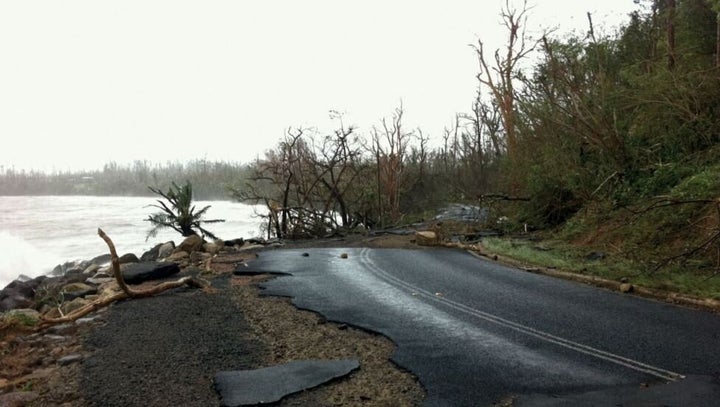
It's coming. Oh boy, is it coming.
Dramatic sea level rise is not here yet. Oceans are estimated to have risen about 20 centimetres since the mid 19th century. That's already enough to have caused climate refugees in low lying islands (including some in the U.S.) but it's still barely noticeable in most places.
Indeed, in his recent controversial speech, ex-Prime Minister Tony Abbott said "more than 100 years of photography at Manly Beach in my electorate does not suggest that sea levels have risen, despite frequent reports from climate alarmists that this is imminent".
That's a pretty common sentiment. Not too many Australians are afraid of buying coastal properties yet.
But massive sea level rise is coming.
In fact it's already locked in, as Australian National University climate change expert and Climate Council councillor Professor Will Steffen explained to HuffPost Australia.

"Sea level lags temperature rise by a long way," Steffen explained.
"The last warm period before this one about 125,000 years ago was somewhere about one degree warmer [than the world is now on average], and sea level was six to nine metres higher.
"So [assuming projections of several degrees of global average temperature rises] we are already committed to at least 10 metres of sea level rise."
Which is a lot. And which would make vast areas of both the developed and developing world uninhabitable.
Why is there a lag behind a warming atmosphere and a rising sea?
That's explained really simply on the site Skeptical Science, which exists to debunk false information that seeks to downplay or deny the reality of climate change.
The site asks the reader to imagine a really hot flame under a pot of water. It takes a while for the water in the pot to respond to all that heat, right? So it is with the oceans. As Skeptical Science explains:
"The mass of the oceans is around 500 times that of the atmosphere. The time that it takes to warm up is measured in decades."
How many decades exactly? Ah, well there's the thing.
"Because of the difficulty in quantifying the rate at which the warm upper layers of the ocean mix with the cooler deeper waters, there is significant variation in estimates of climate lag."
But despite the fact we don't know exactly how much the sea will rise, companies are already acting.
Projections can be dangerous. Projections are where climate scientists have often met the sternest resistance from sceptics. Projections, by their very nature, are imprecise, and as Steffen said "we have to give appropriate qualifiers".
But projections of things like sea level rise are increasingly being taken seriously by companies and governments when millions and even billions of dollars worth of infrastructure are at stake.

As Steffen said, "the fact that you can't predict perfectly what the stock market is going to do doesn't stop you investing".
Steffen gave the example of Brisbane Airport, which is Australia's third busiest airport, and which recently, on the advice of CSIRO sea level experts, invested hundreds of millions to raise the height of the second parallel runway it is building. The airport said:
"It was important to consider climate change implications in the design. Accordingly, a runway height of 1.5 m above the minimum regulatory requirements was adopted. Other climate change adaptation actions were also implemented including channels to reduce tidal flooding, and construction of a seawall."
Experts say we're running out of time to act.
While experts agree that sea level rise will increase over the course of the 21st century, it's not too late to slow things down.
The Climate Council has just issued a report called Critical Decade 2017: Accelerating Climate Action. It says:
Decisions in the next three years are likely to determine whether or not our children and grandchildren will have a fighting chance for a bright future or will be scrambling to survive in a disintegrating and increasingly dangerous global society trying to cope with a chaotic, rapidly changing climate.
"This is a critical warning that the window of opportunity for the federal government to tackle climate change is closing," Climate Council CEO Amanda McKenzie said.